When’s the last time you watched a music video and felt something – anything?
That is, other than disgust and dismay.
For me, it was while watching the visual representation of Kendrick Lamar’s aptly-titled “HiiiPoWeR” for the first time recently. Initially put off by any emcee with an even slight nasally tone, I’ve become a late convert to the cerebral Comptonite, in large part because of the powerful visual for his revolutionary, “Huey Newton goin’ stupid” call for self-empowerment that is surprisingly punctuated by Kendrick simulating the act of self-immolation: lighting oneself on fire as an act of protest.
When’s the last time a video made you an instant fan of an artist?
Unfortunately though, even with Kendrick’s clip I can count on my hands the Hip Hop videos over the last five years that have reached through the screen and grabbed my attention. Sadly, the list of truly powerful visuals for Hip Hop songs shot since YouTube came online is pathetically short: the fiery footage-driven videos for protest anthems in Brother Ali’s “Uncle Sam Goddamn” and Killer Mike’s 2008 HipHopDX Video of the Year, “Pressure,” the Motion Family’s exposing of the other Atlanta for Pill’s “Trap Goin’ Ham,” the throwback to Public Enemy’s “Can’t Truss It” for Freddie Gibbs “National Anthem (Fuck The World),” the admirably authentic struggle to success story shown for Big K.R.I.T.’s “Dreamin,’” and even the touching video for Lil Wayne’s otherwise cringe-inducing “How To Love” are about the only clips I can think of off-hand that made any effort to do more on-screen than churn out clichés.
But thankfully, now The Roots can be added to that list for daring to do what so few Hip Hop artists seem to care to do these days and actually utilize the visual medium to do more than make it rain. And with their four-part video series – bookended by the compelling clip for “Make My” and the equally engrossing “Sleep” – released in anticipation of the group’s tenth studio album, UnDun, The Roots have re-instilled some hope into cynical fans like myself that maybe, just maybe, other contemporary Hip Hop artists will begin making the type of powerful videos that used to be commonplace.
So encouraged by that slim possibility, I wanted to do my part to help motivate any artists (aspiring or established) who happen to read this into creating more compelling videos by compiling a top ten list of the visuals that surely inspired The Roots to remind us all what Rap videos routinely looked like back when it wasn’t abnormal for a fiery one like Killer Mike’s recent clip for “Burn” to be banned. Back when rappers of all persuasions used their valuable video time to shine a light on social and economic injustices and weren’t so indifferent to the world around them. Back when rappers didn’t shy away from putting the most powerful visuals they could on the screen to represent their words.
Back when rappers weren’t so fuckin’ afraid.
10. Scarface “Money And The Power”
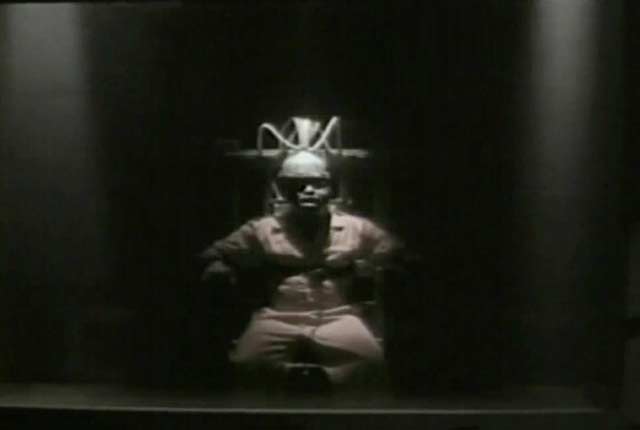
The sociopathic side of Scarface’s narrative brilliance was on full display for the second video released in support of his debut solo album, 1991’s Mr. Scarface Is Back. From the opening shot of “Money And The Power,” where the viewer is greeted by a cackling-with-confidence Scarface as he lies on what will soon be revealed as his second-to-last resting place, it becomes immediately clear that this is not going to be your ordinary Hip Hop video.
‘Face subsequently details his fictional rise, and inevitable fall, as a “600-bucks-a-muthafuckin’-hour” kingpin while the witnesses to his final moments chant his now delusional declaration of street supremacy. A seemingly psychotic Scarface is then shown strolling to his death, with winks, smiles and head-nods masking the underlying fear he’ll soon reveal on his face for the first, and last, time.
While the power of the haunting visual for the ‘Face-as-reaper video, “I Seen A Man Die,” and the chilling clip for his eye-for-an-eye revenge tale “A Minute To Pray And A Second To Die” are undeniable, no visual in the Scarface videography can match the intensity of “Money And The Power.” The closing scene alone arguably marks the most powerful moment in Hip Hop video history, as Scarface convincingly convulses to simulate 2,500 volts of electricity charging through his body.
Elevating the visual medium, a then 21-year-old ‘Face took what may have been misinterpreted initially in its audio form as an anthem for aspiring dealers and via the video form turned it into one of the most intense cautionary warnings ever committed to film. So to anyone questioning whether or not Scarface belongs on this list as having helped create one of the most powerful videos of all time, the answer is simple: Yep.
9. Too Short “I Want To Be Free (That’s The Truth)”
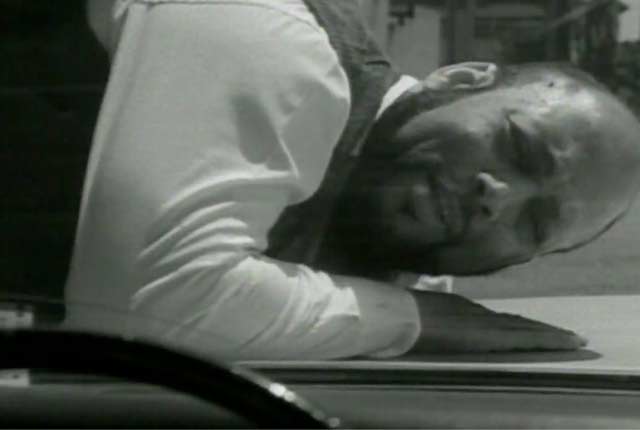
In 2011, you pretty much have to be a man of a certain age to recall when Hip Hop’s original mack, Too Short, was also one of the culture’s premier hood reporters. In between telling his “Freaky Tales,” Short Dog schooled his listeners as to why “Life Is … Too Short” for the misguided who “Want To Be A Gangster,” while also documenting the devastating impact crack had upon his Oaktown stomping grounds for his stunning cover of Donny Hathaway’s “The Ghetto.” And with the first single from his seventh LP, 1992’s Shorty The Pimp, Too Short took to task incessant police harassment for what would become the most powerful video of his career in “I Want To Be Free.”
Atop Shorty B’s rubber band bassline, and the rest of The Dangerous Crew’s live-music street symphony, Too Short shed his playboy persona to plea for his freedom from the figurative (and eventually literal) imprisonment caused by racial profiling. A gripping visual accompaniment to his admirable attempt at reasoning with the unreasonable was chillingly concluded by a scene that will seem all too familiar to a younger generation of Towners whose exposure to death at the hands of law enforcement began with the videotaped murder of Oscar Grant.
While Short never really resumed his role of reporter of societal ills after “I Want To Be Free,” (instead choosing to comprise his content almost entirely of Cocktails), Shorty the Pimp proved with his first few major-label releases that any artist, regardless of their direction or style, can successfully navigate the risky waters of commentating on issues of the day. For just making the effort to say something, Too Short can now claim credit as the deliverer of not just one of the most powerful videos in Hip Hop history, but also arguably one of the most spine-tingling lines in 32 years of recorded Rap with his closing retort to the brutality he is documenting when Short poignantly notes, “I ain’t mad … I’m just Black.”
8. Boogie Down Productions “Love’s Gonna Get’cha”

In 2011, you really have to have some salt in your pepper hair to remember when KRS-One could actually be labeled a “Gangsta Rapper.” And so for those old enough to recall when KRS commanded his criminal foes to listen to his “9 millimeter go bang!,” it is no surprise that the subsequently reformed “Teacha” can claim credit for authoring arguably the greatest Crack-Rap song ever in “Love’s Gonna Get’cha.”
Although the antithesis of an endorsement of slangin’, the song perfectly captures what life was like during the era when crack controlled the streets. Just a few years after he introduced himself, alongside Boogie Down Productions’ partner, Scott La Rock, as an intelligent hoodlum on Criminal Minded (and almost exactly three years after La Rock was gunned down while defending his deejay heir in B.D.P., D-Nice, from some ruffians who had earlier attacked the then teenager), KRS-One delivered one of the most compelling cautionary tales in Hip Hop history for the sole single from B.D.P.’s fourth album, 1990’s Edutainment.
Atop a remarkably contemporary-sounding 808 boom, KRS tells the semi-autobiographical tale of a teen trying to aid his family and escape their impoverished surroundings by any means necessary, who soon becomes addicted to the gain from the game. Speaking empathetically to those of us who have actually experienced only having “three pairs of pants” we shared with our brother and at times nothing more than “beans, rice and bread” on our shelves, KRS skillfully sidesteps preachiness and instead of lecturing his listener lets his superb storytelling ability serve as all the warning one need about the inevitable conclusion to any gangster’s life.
KRS’ powerful narrative is matched by an equally compelling visual. Against a stark, pitch-black backdrop The Blastmaster’s gripping tale is brought to life, with each scene in his scribed story presented by a perfect visual accompaniment, intensely climaxing with KRS’ ill-fated attempt to seek revenge for an attack by his onetime criminal mentor on his real-life brother, Kenny Parker. Unlike many of the other powerful videos of the day, a climactic conclusion is not shown to the viewer, but brilliantly KRS lets you know exactly what happens in the final showdown of his story when he frustratingly, and fearfully, poses his last desperate query to the listener: “They shot down one, they shot down two, now tell me what the fuck am I supposed to do?”
7. The Coup – “Me & Jesus The Pimp In A ’79 Granada Last Night”

The art of storytelling. Slick Rick, Scarface, Kool G. Rap, KRS-One, The Notorious B.I.G. and only a few other select names immediately come to mind when listing Hip Hop’s narrative masters. One name that is unfortunately almost never spoken of when talk turns to the culture’s creative writing experts is Boots Riley of The Coup. With deejay Pam the Funkstress supplying sinister scratches to support his daringly anti-capitalist observations on our two America’s two decades before the current Occupy protests, Boots spent a large portion of his rhyme time taking to task “Fat Cats and Bigga Fish” while contemplating “5 Million Ways To Kill A C.E.O.” But the politically-charged poet cemented his status as a storytelling genius (while still slyly managing to “edutain”) with “Me & Jesus The Pimp In A ’79 Granada Last Night” from The Coup’s third full-length, 1998’s Steal This Album.
With a freshly freed from prison Jesus riding shotgun (perfectly portrayed by Berkeley, California native Roger Guenveur Smith, who is best known for his standout performance as Smiley in Spike Lee’s Do the Right Thing), Boots takes viewers on a lyrical and physical journey through a metaphorical tale of his working-girl mother who is murdered at the hands of her abusive pimp, after which he temporarily flirts with being a “baby Jesus” before realizing the illogic in Jesus’ pimping philosophy.
In the expected, but somehow still shocking, conclusion to their trip, Boots symbolically shoots down the poisonous pimping mentality that his fellow Oakland griot, Too Short, ironically helped to make mainstream. Or was it religion that Boots also bucked down when he left Jesus slumped in that Granada? Hmmm … Some food for thought delivered in the form of one of the most powerful storytelling songs and videos in the history of Hip Hop.
6. N.W.A. “Straight Outta Compton”

There isn’t really much to say that hasn’t already been said over the last 23 years about the bad-ass song to top all bad-ass Hip Hop songs, N.W.A.’s “Straight Outta Compton.”
Ice Cube’s intimidating introduction to the culture’s first “gang” on wax over Dr. Dre’s growling collage of sampled sounds still sounds as menacing as it did in the days when hearing a rapper curse like a sailor and threaten anyone who dare step to him “with a gat that’s pointed at yo’ ass” actually shocked and awed a nation.
Unfortunately, the visual presentation of N.W.A.’s shit-talking ode to their South Central stomping grounds has not held up as well as the song itself. While running from the cops, and inexplicably walking around with your shoes on fire, was some bad-ass shit to do in a video in the late ‘80s, throwing rocks at departing police and the like isn’t exactly as gangsta these days as it appeared to be back when Cube still had a curl. Two decades and some change later, Eazy-E now comes across much more comical than threatening as he rides alongside a police truck taunting a cop that apparently has no interest in pulling him over and tossing him in the paddy wagon with the rest of his chased-down crew.
So while the clip’s quick cuts created movement that wouldn’t become commonplace in Hip Hop visuals until more than a decade later, the video for “Straight Outta Compton” feels painfully dated and thus a lot less powerful today than it did when Lil Wayne was in the second grade. But inclusion on this list is not a test of the timelessness of N.W.A.’s first visual, but rather a respectful nod to the video’s initial impact, a force that terrified mainstream America upon its premiere (after initially being banned by MTV). Back when Rap videos were purposefully designed to scare the shit out of anyone watching them.
Part Two of Powaful Impak! The 10 Most Powerful Videos In Hip Hop History


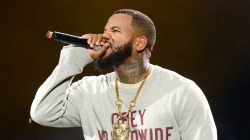
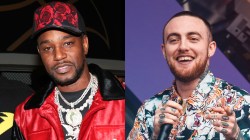
![Method Man Admits He Didn't Like Drake's "Wu-Tang Forever": "I [Wasn't] Getting On That"](https://hiphopdx.com/wp-content/uploads/2025/12/method-man-drake-wu-tang-forever-remix.jpg?w=250)
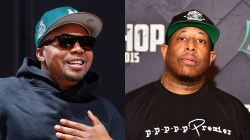

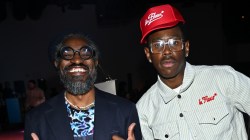

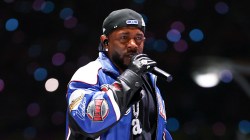
You put the wrong video for The Coup (that’s Gangstarr) Here is the actual video: http://www.youtube.com/watch?v=6ImD4l1l0bA
Oh. It’s fixed. Tight!
Great videos! NO DOUBT!! But good lord did you pick a ruff topic to lay on a simple TEN. I mean THIS video is one of the most socially moving to date. It lets you know exactly who the dude is and what he is all about!! CAIN DANCE!! http://www.youtube.com/watch?v=bs7fJ6jAOVU&feature=youtube_gdata_player
That Coup vid was the shit. I think Fat Cats Bigger Fish was a better vid though
I agree that was the vid and the Jam, with a good meaning as well.
protect ya neck better be there. same with can i kick it
No Pharoahe Monch Clap (One Day) ? Sad so sad !!
pharoahe gets no love anywhere smh
what? No CREAM?!
Ballad of the Black Gold by Reflection Eternal is an incredibly moving video
the “black hand side” vid by pharaohe monch is dope monch has quite a number of high quality of music vids
Dope choice and good meaning….
Pac – Brenda’s Got A Baby and Trapped…not to mention Keep Ya Head Up. add Dear Mama too!
DEAR MOMMA
This list is cool but could have gone much deeper but to not have The Message on it is crazy….That was the first song of its kinda and it broke down Reaganomics… PE night of the living Base heads or Fight the power can and should be it along with Shut em down….. Brand Nubian- slow down or Sunshine, Xclan- Grand Verbalizer what time is it.. Toddy T- Batter Ram there are a bunch of songs that had impact and a strong message, Dela Soul – Say No Go….
Your missing the point of this article … although the songs you mentioned have powerful messages this article is about sons with a powerful video, the visual of the message.
Love how he included Too Short on this list. Short Dog is only remembered for his songs callin out bitches but he had so many songs speaking about the ills of society, especially in my home of the Bay Area and Oakland. The birthplace of the Panthers got to be pretty damn bad when crack hit. Crazy shit.
kool g rap – on the run